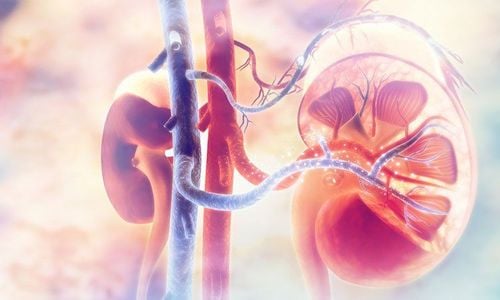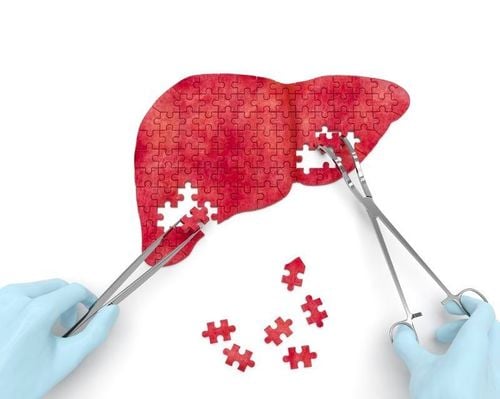This is an automatically translated article.
This article is professionally consulted by Dr. Nguyen Van Thanh - Obstetrician and Gynecologist - Department of Obstetrics and Gynecology - Vinmec Nha Trang International General Hospital. Doctor has many years of experience in the field of Obstetrics and Gynecology.HELLP syndrome in pregnant women is the most severe form of pregnancy toxicity that can threaten the life of the mother and fetus, usually occurring in the late pregnancy or postpartum.
1. Overview
HELLP syndrome in obstetrics has the following main features:Hemolysis leading to anemia; Elevated liver enzymes (E levated Liver Enzymes) due to liver ischemia, liver infarction; Thrombocytopenia (Low P latelets) due to intravascular agglutination due to diffuse damage to the endothelium. This syndrome is considered a variant of pre-eclampsia, with a high risk of death for the mother and the fetus. Currently, the cause of HELLP syndrome is unclear and controversial. However, most experts consider the nature of the syndrome to be a special clinical form of preeclampsia.
Due to the severity of its nature, HELLP syndrome is assessed as a medical condition requiring urgent diagnosis and treatment in specialized obstetrics and intensive care units. Currently, in Vietnam, there is still no accurate information about HELLP syndrome cases in pregnant women.
Classification, degree: According to the American Association of Obstetricians and Gynecologists (ACOG), HELLP syndrome in obstetrics is divided into two types:
Partial HELLP syndrome (with one or two abnormal signs). Full HELLP syndrome: with risk of serious maternal complications, termination of pregnancy is recommended. In terms of severity, HELLP syndrome is assessed based on platelet count:
Grade I: less than 50,000/mm3. Grade II: from 50,000 to 100,000/mm3. Grade III: 100,000 – 150,000/mm3. The severity depends on the platelet count.

2. Symptoms
Most often, HELLP syndrome occurs on the background of a toxic pregnancy (pre-eclampsia or eclampsia). Common clinical symptoms are:Feeling uncomfortable, blurred vision (90%); Epigastric pain (65%); Increasing headache (31%); Nausea and vomiting (30%) Edema, high blood pressure, jaundice, subcutaneous hemorrhage. Eclampsia: on the background of preeclampsia, convulsions appear, signs of damage to the central nervous system. Subclinical symptoms (3 criteria of HELLP syndrome):
Hemolysis due to microvascular damage: acute intravascular hemolysis, increased indirect bilirubin, increased LDH, decreased blood haptoglobin. Elevated liver enzymes: usually 3 times higher than normal, there is pain in the right lower quadrant. The liver capsule may rupture leading to a hematoma. Thrombocytopenia: due to coagulation in the blood vessels, due to diffuse damage to the endothelial layer. Disseminated intravascular coagulation is common in 20% of pregnant women with HELLP syndrome and in 84% of cases if accompanied by acute renal failure.
Pregnant women with symptoms of HELLP syndrome may be misdiagnosed at an early stage, increasing the risk of liver failure leading to more severe disease.

3. Complications
HELLP syndrome in pregnant women often leads to complications:Disseminated intravascular coagulation Renal failure. Pulmonary edema . Young vegetables. Hematoma under the liver capsule. Bleeding complications. Prognosis for maternal mortality is about 10%, infant mortality is from 10-60% depending on the mother's condition. The probability of HELLP syndrome in the next pregnancy is 20-30% and there is a 40% risk of developing preeclampsia in subsequent pregnancies.

4. Treatment measures
4.1. Termination of pregnancy
In the case of severe maternal disease, the most effective treatment is prompt removal of the fetus from the uterus (pregnancy termination) by induced delivery or cesarean section. In case of preterm pregnancy (under 26 weeks) should be delayed to wait for fetal development. It is possible to promote fetal development by amniocentesis, using dexamethasone...but there is still a risk to the life of mother and fetus.4.2. Lower blood pressure
Goal: lower blood pressure by 10-15% in the first few hours. Initially, the mother used antihypertensive drugs (Labetalol, Hydralazine, Nifedipine) intravenously because of its quick and short effect, then gradually reduced oral drugs. When the fetus is still alive: keep diastolic blood pressure at 90-100mmHg. Pay attention to the side effects of the drug on the fetus.
4.3. Treatment of thrombocytopenia
Platelet transfusion for the purpose of preventing bleeding during intervention or delivery. One unit of platelets can increase maternal blood platelets to 5,000-10,000/ml. Expected usual dose: 4-6 units/day. Threshold for platelet transfusion: command delivery (<20,000/ml), caesarean section (<40,000/ml). In case of severe bleeding in the liver, life-threatening to the mother, the method of vascular embolization can be used.HELLP syndrome is a particularly dangerous condition that occurs in 0.5 - 0.9% of pregnant women, is a rare syndrome but has a high mortality rate (25%). To detect this syndrome in time, pregnant women should have good pregnancy management, periodical examination, early detection of pregnancy toxicity for timely treatment.
At Vinmec International General Hospital, there is a package maternity service as a solution to help pregnant women feel secure because of the companionship of the medical team throughout the pregnancy. When choosing Maternity Package, pregnant women can:
The pregnancy process is monitored by a team of highly qualified doctors Regular check-ups, early detection of abnormalities The Package Maternity package helps to facilitate convenient for the birthing process Newborns are taken care of comprehensively.
Please dial HOTLINE for more information or register for an appointment HERE. Download MyVinmec app to make appointments faster and to manage your bookings easily.














